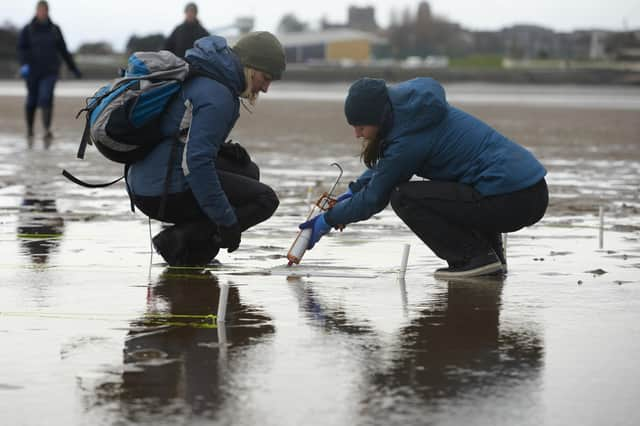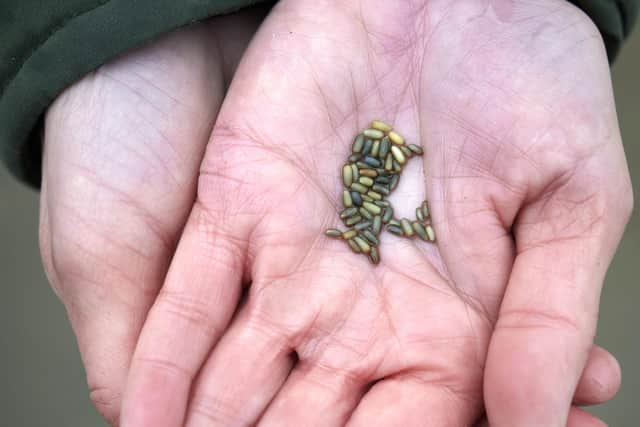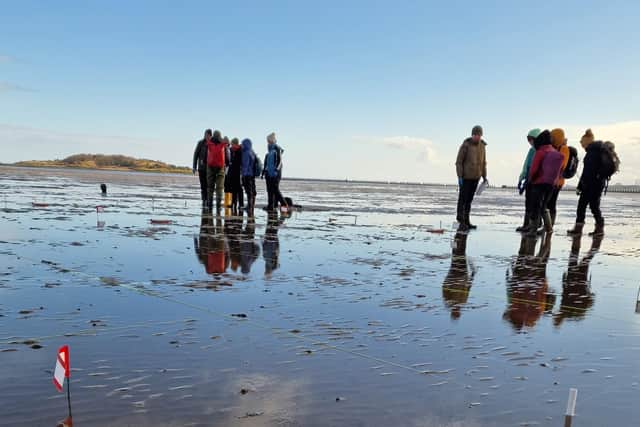Milestone in £2.4m project to revive Forth’s meadows of seagrass


The Restoration Forth project has confirmed around 25,000 seeds have been successfully injected into the ground at trial sites at Pettycur Bay, Kinghorn, Tyninghame beach in East Lothian, and Dalmeny’s Drum Sands.
It’s the latest milestone in a £2.4m biodiversity project which has already involved over 4000 people to bring back seagrass habitats and native oyster populations to the Firth of Forth.
Advertisement
Hide AdAdvertisement
Hide AdThis three-year programme is funded by Aviva, the ScottishPower Foundation, the Moondance Foundation and the Scottish Government’s Nature Restoration Fund, which is facilitated by the Scottish Marine Environmental Enhancement Fund (SMEEF) and managed by NatureScot.
Seagrass probably goes un-noticed by people walking the beaches of the Forth at low tide, but it is an important part of the river’s ecology - it is the unsung hero of our oceans.
Kinghorn’s vast beachscape is of particular importance to the project because it is the major site in the Forth for the larger seagrass, known as Zostera marina.
The research will not only map the seagrass, but help marine biologists understand how it changes, and has changed over, the generations - the team already knows seagrass has been part of the escape for over 200 years and Kinghorn is the oldest known bed in the Forth.
Locations for the trials were selected due to being sheltered, and, one year on, large-scale planting aims to restore hectares of seagrass in the Firth of Forth by 2024, the equivalent of 5.5 international football pitches.


Alongside the seagrass planting, native oysters will be deployed to create reefs, which once flourished in the Forth, that will remove pollutants and provide sanctuary for a vast array of marine life.
Naomi Arnold, Restoration Forth project manager said: “This is a really exciting step in the Restoration Forth project. As these trial sites have been carefully selected, we’re hopeful the seagrass seeds will take, start to germinate and that we can continue with further trials this year.
“Seagrass is the unsung hero of our oceans and can play a major part in tackling climate change as well improving water quality and enhancing biodiversity.
Advertisement
Hide AdAdvertisement
Hide Ad“The project wouldn’t be possible without the enthusiasm of our local volunteers and community hubs who have put in so much effort and hard work.”


Huge numbers of volunteers have been involved in the project over the last 12 months.
Sandy Mitchell, a community volunteer from Dunfermline said: “The Restoration Forth project is important in raising awareness, within local communities, of the future benefits that can be gained with the re-introduction of sea grass and native oysters into the Forth estuary.
“Involving people from the local communities gives them a sense of achievement and pride in knowing that they are helping to improve water quality, increase biodiversity and tackling CO2 issues in the years to come.”Melanie Hill, executive officer and trustee of the ScottishPower Foundation, said: “This is an exciting milestone in the project to restore seagrass and oysters in the Firth of Forth, and we’re delighted to be funding part of this crucial programme to help tackle the climate emergency and educate the local community on the importance of these habitats to the wider ecosystem and our future.
“With the ScottishPower Foundation celebrating its tenth anniversary this year, the Restoration Forth project is a shining example of how our funding is helping project partners to provide the blueprint for further marine restoration projects across the country.”
Claudine Blamey, Aviva Group Sustainability Director, said: “There are so many benefits to seagrass restoration – from increased biodiversity to carbon removal and reduced coastal erosion. Supporting a project like this just makes sense and we are proud to play a part through funding and colleague volunteering.
“We want the UK to be the most climate-ready large economy in the world and our involvement in several of WWF-UK’s restoration programmes will strengthen this by helping local communities to be more resilient to climate change.”